Adapting code from Random Walk (Implementation in Python) and 1D Random Walk
# Python code for 1-D random walk.
import random
import numpy as np
import matplotlib.pyplot as plt
# Probability to move up or down
prob = [0.05, 0.95]
n = 1000 # number of steps
# statically defining the starting position
start = 2
positions = [start]
# creating the random points
rr = np.random.random(n)
downp = rr < prob[0]
upp = rr > prob[1]
t = 1
step = (1/n)**0.5
for idownp, iupp in zip(downp, upp):
down = step if idownp and positions[-1] > 1 else 0
up = step if iupp and positions[-1] < 4 else 0
positions.append(positions[-1] - down + up)
# plotting down the graph of the random walk in 1D
x = [i*t/n for i in range(n+1)]
plt.plot(x, positions)
plt.xlabel('Time (seconds)')
plt.ylabel('Distance')
plt.title(f"Random Walk ({n} steps in {t} seconds)")
plt.grid(True)
plt.savefig("random_walk.png")
plt.show()
Display

Further Code Explanation
Since:
prob = [.05, 0.95]
downp = rr < prob[0] # Boolean which is True 5% of the time since rr uniform [0, 1)
upp = rr > prob[1] # Boolean which is True 5% of the time since rr uniform [0, 1)
This creates following possibilities for downp, and upp
downp upp
False False # 90% of the time
True False # 5% of the time
False True # 5% of the time
To decide about stepping down or up we have expressions:
down = step if idownp and positions[-1] > 1 else 0 # (1)
up = step if iupp and positions[-1] < 4 else 0 # (2)
Where step is the step size and positions[-1] is the last position
(1) above is equivalent to:
if downp and positions[-1] > 1:
down = step
else:
down = 0
This means we only step down when the last position > 1 and we have down flag is True (thus 1 becomes a lower bound)
(2) above is equivalent to:
if ipp and positions[-1] < 4:
up = step
else:
up = 0
Which means we step up only when last position < 4 and ipp Flag is True (thus 4 becomes an upper bound)
In updated position we have:
positions.append(positions[-1] - down + up)
This means:
new_position = positions[-1] - down + up
Single step walk possibilities are:
down up new_position
0 0 positions[-1] # 90%
step 0 postions[-1] - step # 5%
0 step positions[-] + step # 5%
